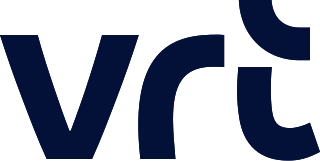
Digital Video Broadcasting (DVB) is a set of international open standards for digital television. DVB standards are maintained by the DVB Project, an international industry consortium, and are published by a Joint Technical Committee (JTC) of the European Telecommunications Standards Institute (ETSI), European Committee for Electrotechnical Standardization (CENELEC) and European Broadcasting Union (EBU).
DVB-T, short for Digital Video Broadcasting – Terrestrial, is the DVB European-based consortium standard for the broadcast transmission of digital terrestrial television that was first published in 1997 and first broadcast in Singapore in February 1998. This system transmits compressed digital audio, digital video and other data in an MPEG transport stream, using coded orthogonal frequency-division multiplexing modulation. It is also the format widely used worldwide for Electronic News Gathering for transmission of video and audio from a mobile newsgathering vehicle to a central receive point. It is also used in the US by Amateur television operators.
Television in the Netherlands was officially introduced in 1951. In the Netherlands, the television market is divided between a number of commercial networks, such as RTL Nederland, and a system of public broadcasters sharing three channels, NPO 1, NPO 2, and NPO 3. Imported programmes, as well as news interviews with responses in a foreign language, are almost always shown in their original language, with subtitles.
The Radio-télévision belge de la Communauté française, shortened to RTBF, is a public service broadcaster delivering radio and television services to the French-speaking Community of Belgium, in Wallonia and Brussels. Its counterpart in the Flemish Community is the Dutch-language VRT, and in the German-speaking Community it is BRF.

Vlaamse Radio- en Televisieomroeporganisatie, commercially styled as VRT is one of the national public service broadcasters for the Flemish Community of Belgium.

CanalDigitaal is a provider of digital television via satellite for the Dutch market, using the Astra satellites at 23.5° east.

Telenet Group N.V. is the largest provider of cable broadband services in Belgium. Its business comprises the provision of analog and digital cable television, fixed and mobile telephone services, primarily to residential customers in Flanders and Brussels. In addition, Telenet offers services to business customers all across Belgium and in Luxembourg under its brand Telenet Solutions.
Television in Germany began in Berlin on 22 March 1935, broadcasting for 90 minutes three times a week. It was home to the first regular television service in the world, named Fernsehsender Paul Nipkow.
DVB-T2 is an abbreviation for "Digital Video Broadcasting – Second Generation Terrestrial"; it is the extension of the television standard DVB-T, issued by the consortium DVB, devised for the broadcast transmission of digital terrestrial television. DVB has been standardised by ETSI.
The Netherlands now has three major forms of broadcast digital television. Terrestrial (DVB-T), Cable (DVB-C), and Satellite (DVB-S). In addition IPTV services are available. At the end of the first quarter of 2013 almost 84% of the households in the Netherlands had some form of digital television.
Television in Belgium was introduced in 1953 and began with one channel each in Dutch and French. The country is heavily cabled, with 93% of households watching television through cable as of 2003.

RTL Club is a French-language Belgian television channel based in Brussels and owned by DPG Media and Groupe Rossel, it was originally owned by RTL Group until 31 March 2022. The channel is transmitted in Belgium and Luxembourg.
The mass media in Belgium is characterized by its diversity due to the linguistic divide in the country.

RTL-TVI is a private French-language, Belgian-based television station owned by DPG Media and Groupe Rossel, it was originally owned by the RTL Group until 31 March 2022. Until 2022, it was broadcast with a Luxembourgish licence, but the new owners preferred a Belgian licence. Within the French-speaking area of Belgium, it is the most popular channel with a 20 percent viewing share. It was the first commercial television station in Belgium.

RTL Plug is a general Belgian French speaking commercial television channel for Belgium and Luxembourg and targeting adolescents and young people. The station is particularly popular in francophone parts of Belgium, but also somewhat in Flanders, the Dutch-speaking region of Belgium as well.
Télésat, formerly known as Télésat Numérique, is a satellite subscription television provider owned by M7 Group aimed at the French-speaking community of Belgium and Luxembourg, which also offers a triple play package of satellite television, internet and landline telephone services. In september 2019, M7 Group was bought by Vivendi's Canal+ Group. In 2020 the legal entity M7 Group S.A. changed its name into Canal+ Luxembourg S.a.r.l. while its group brand name remains M7 Group.
M7 Group is a Luxembourg-based television provider owned by the French media conglomerate Canal+.
Joyne was a provider of digital television via satellite for the Dutch and Flemish market, using the Eutelsat's 9B satellites at 9°E east. Joyne is a combination of the words Joy and join For most channels a smartcard was required to decrypt the Conax signal. On 9 April 2021 Joyne went bankrupt. Bankruptcy was requested by Eutelsat. On 19 April 2021 it was announced Canal+ Luxembourg took over certain assets. Customers were offered to move to Canal Digitaal and TV Vlaanderen's offer. Some channels offered formerly by Joyne continued broadcasting on Eutelsat 9B until 31 July 2021. Some other channels including channels owned by Discovery have ceased broadcast on 19 April 2021.







